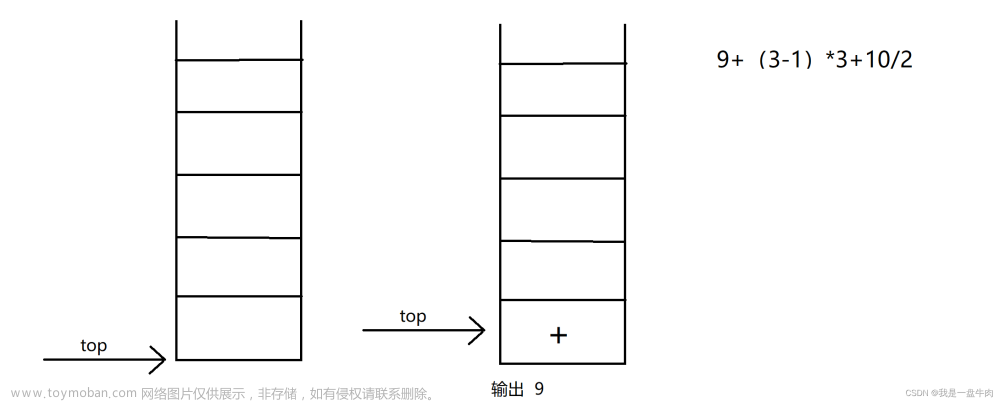1、使用方法
传递一个分开保存符号与数字的List即可:List SumNumber;
获取参数的构造方法如下:文章来源:https://www.toymoban.com/news/detail-609572.html
public ReversePolish(List<String> sumNumber) {
SumNumber = sumNumber;
}
要求的List保存数据的方式如下:
例如:1+2+3
然后使用 EvaluatePostfixExpressions方法传递出一个保存好结果的String。文章来源地址https://www.toymoban.com/news/detail-609572.html
2、代码实现
package com.example.computermoblie;
import java.math.BigDecimal;
import java.math.RoundingMode;
import java.util.ArrayDeque;
import java.util.ArrayList;
import java.util.List;
import java.util.PriorityQueue;
import java.util.Queue;
import java.util.Stack;
public class ReversePolish {
public List<String> SumNumber;
Stack<BigDecimal> SymbolStack = new Stack<>();
//表示没有计算错误的情况
private boolean Error = false;
public static final int LeftBrack = 0; //左括号优先级
public static final int AandS = 1; //加减法
public static final int MandD = 2; //乘除
public static final int RightBrack = 3; //右括号优先级
//中缀转后缀
public Queue<String> InfixToSuffix() {
Queue<String> queue = new ArrayDeque<>();
Stack<String> swapStack = new Stack<>();
for (int i = 0; i < SumNumber.size(); i++) {
String isStr = SumNumber.get(i);
if (!IsSymbol(isStr)) {
queue.add(isStr); // 将数字直接添加到输出队列中
} else {
if (swapStack.isEmpty() || isStr.equals("(")) {
swapStack.push(isStr);
} else if (isStr.equals(")")) {
if(!swapStack.isEmpty()){
while (!swapStack.peek().equals("(")) {
queue.add(swapStack.pop());
}
swapStack.pop(); // 弹出 "("
}
} else {
while (!swapStack.isEmpty() && JudgmentPriority(swapStack.peek(), isStr)) {
queue.add(swapStack.pop());
}
swapStack.push(isStr);
}
}
}
while (!swapStack.isEmpty()) {
queue.add(swapStack.pop());
}
return queue;
}
public String EvaluatePostfixExpressions() {
Error = false; // 表示运算未发现错误
BigDecimal ret = null; // 表示最后的运算结果
Queue<String> queue = InfixToSuffix(); // 获取后缀表达式
Log.d("WQWQ",queue.toString());
while (!queue.isEmpty()) {
String str = queue.remove();
if (!IsSymbol(str)) {
//保存数据
try {
BigDecimal number = new BigDecimal(str);
SymbolStack.push(number);
} catch (NumberFormatException e) {
Log.d("Number","出现空值");
}
} else {
if (SymbolStack.size() < 2) {
Error = true; // 栈中元素不足2个,运算错误
break;
}
BigDecimal op2 = SymbolStack.pop();
BigDecimal op1 = SymbolStack.pop();
BigDecimal result = null;
switch (str) {
case "+":
result = op1.add(op2);
break;
case "-":
result = op1.subtract(op2);
break;
case "×":
result = op1.multiply(op2);
break;
case "÷":
if (op2.compareTo(BigDecimal.ZERO) == 0) {
Error = true; // 除数为零,运算错误
break;
}
result = op1.divide(op2, 3, RoundingMode.HALF_UP);
break;
default:
Error = true; // 非法的运算符,运算错误
break;
}
if (Error) {
break;
} else {
SymbolStack.push(result);
}
}
}
if (Error) {
return "Error"; // 出现错误后直接返回错误信息
} else {
if (!SymbolStack.isEmpty()) {
ret = SymbolStack.pop();
}
// 使用toEngineeringString()方法将结果输出为工程计数法
return ret.toEngineeringString();
}
}
public ReversePolish(List<String> sumNumber) {
SumNumber = sumNumber;
}
//判断是否为符号
public boolean IsSymbol(String str) {
boolean isSymbole = false;
if (str.equals("+")) {
isSymbole = true;
} else if (str.equals("-")) {
isSymbole = true;
} else if (str.equals("×")) {
isSymbole = true;
} else if (str.equals("÷")) {
isSymbole = true;
} else if (str.equals("(")) {
isSymbole = true;
} else if (str.equals(")")) {
isSymbole = true;
}
return isSymbole;
}
//判断优先级
public boolean JudgmentPriority(String PreantStr, String SunStr) {
//默认PreantStr优先级小于SunStr
boolean value = false;
if (SymbolValue(PreantStr) >= SymbolValue(SunStr)) {
value = true;
}
return value;
}
//判断属于什么符号
public int SymbolValue(String str) {
int Value = LeftBrack;
if (str.equals("+")) {
Value = AandS;
} else if (str.equals("-")) {
Value = AandS;
} else if (str.equals("×")) {
Value = MandD;
} else if (str.equals("÷")) {
Value = MandD;
} else if (str.equals("(")) {
Value = LeftBrack;
} else if (str.equals(")")) {
Value = RightBrack;
}
return Value;
}
public List<String> getSumNumber() {
return SumNumber;
}
}
到了这里,关于中缀表达式转后缀表达式,使用逆波兰计算。可以计算小数的文章就介绍完了。如果您还想了解更多内容,请在右上角搜索TOY模板网以前的文章或继续浏览下面的相关文章,希望大家以后多多支持TOY模板网!











